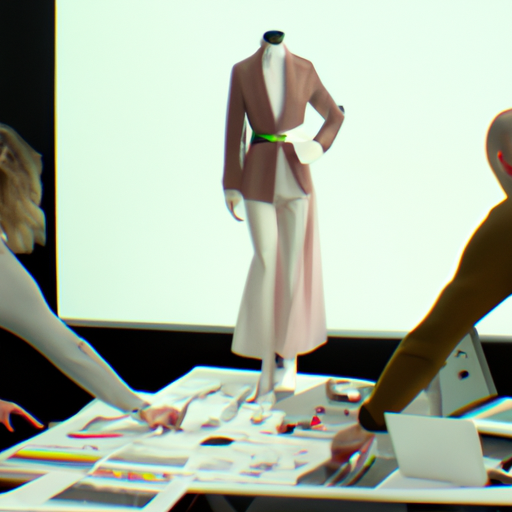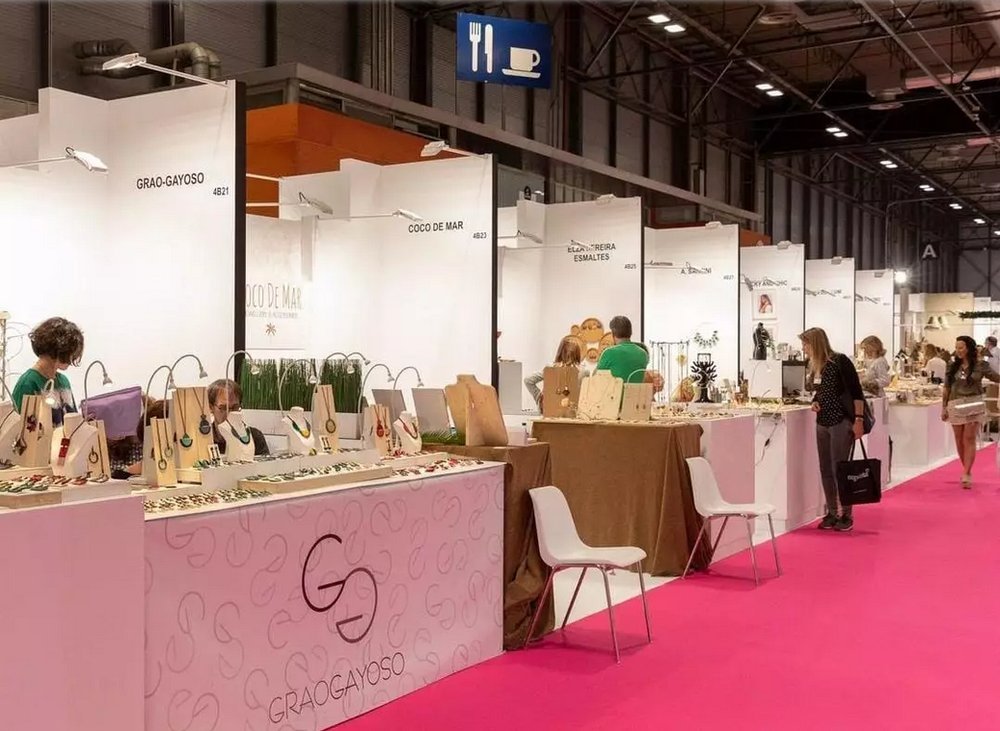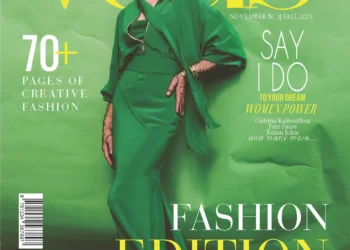Table of Contents
- Introduction
- How Fashion Designers are Adapting to the Changing Market
- How to Overcome Creative Blocks as a Fashion Designer
- How to Balance Quality and Quantity in Fashion Design
- How to Stay Ahead of the Curve in Fashion Design
- How to Utilize Technology to Enhance Fashion Design
- How to Manage Time and Resources as a Fashion Designer
- How to Develop Sustainable Practices in Fashion Design
- Conclusion
«Fashion Designers: Solving Problems with Style!»
Introduction
Fashion designers are creative problem-solvers who use their skills to create stylish and functional clothing. They must be able to think outside the box and come up with innovative solutions to the challenges they face. From finding the right fabric to creating a garment that fits the body perfectly, fashion designers must be able to think on their feet and come up with creative solutions to the problems they face. This article will explore the problem-solving skills of fashion designers and how they can be used to create beautiful and functional clothing.
How Fashion Designers are Adapting to the Changing Market
The fashion industry is constantly changing, and fashion designers must be able to adapt to the changing market in order to remain competitive. In recent years, the industry has seen a shift towards more sustainable and ethical practices, as well as a greater focus on digital marketing and e-commerce. As a result, fashion designers must be able to adjust their strategies in order to stay ahead of the curve.
One way fashion designers are adapting to the changing market is by focusing on sustainability. Many designers are now using eco-friendly materials and production processes in order to reduce their environmental impact. Additionally, they are also looking for ways to reduce waste and increase efficiency in their production processes. This includes using recycled materials, minimizing water and energy consumption, and using renewable energy sources.
Another way fashion designers are adapting to the changing market is by embracing digital marketing and e-commerce. Many designers are now using social media platforms such as Instagram and Snapchat to promote their collections and engage with their customers. Additionally, they are also utilizing e-commerce platforms such as Shopify and Amazon to sell their products directly to customers. This allows them to reach a wider audience and increase their sales.
Finally, fashion designers are also adapting to the changing market by focusing on ethical practices. Many designers are now ensuring that their production processes are fair and ethical, and that their workers are treated fairly and paid a living wage. Additionally, they are also looking for ways to reduce their carbon footprint and support local communities.
Overall, fashion designers must be able to adapt to the changing market in order to remain competitive. By focusing on sustainability, digital marketing and e-commerce, and ethical practices, fashion designers can ensure that their businesses remain successful in the ever-evolving fashion industry.
How to Overcome Creative Blocks as a Fashion Designer
Creative blocks are a common challenge for fashion designers. They can be caused by a variety of factors, including stress, fatigue, and lack of inspiration. Fortunately, there are several strategies that fashion designers can use to overcome creative blocks and get back to designing.
First, it is important to take a break. Taking a break from designing can help to clear the mind and provide a fresh perspective. This could involve taking a walk, listening to music, or engaging in another creative activity.
Second, it is important to get organized. Having a clear plan and timeline for a project can help to reduce stress and provide focus. It can also help to break down a project into smaller tasks, which can make it easier to manage.
Third, it is important to seek out inspiration. Looking at the work of other fashion designers, attending fashion shows, and exploring different cultures can help to spark creativity.
Fourth, it is important to experiment. Trying out different techniques and materials can help to generate new ideas.
Finally, it is important to stay positive. Negative thoughts can be a major obstacle to creativity. It is important to stay focused on the task at hand and to remember that creative blocks are a normal part of the creative process.
By following these strategies, fashion designers can overcome creative blocks and get back to designing.
How to Balance Quality and Quantity in Fashion Design
Balancing quality and quantity in fashion design is a challenge that many designers face. Quality is essential for creating a successful fashion line, as it is the foundation of a successful product. Quality is determined by the materials used, the construction of the garment, and the overall design. Quantity, on the other hand, is important for meeting customer demand and ensuring that the fashion line is profitable.
The key to balancing quality and quantity in fashion design is to focus on the details. Quality should be the priority when selecting materials and constructing garments. Designers should use high-quality fabrics and trims, and pay attention to the details of the construction. This will ensure that the garments are well-made and will last for a long time.
At the same time, designers should also consider the quantity of garments they are producing. It is important to produce enough garments to meet customer demand, but not so many that the quality of the garments is compromised. Designers should also consider the cost of production when determining the quantity of garments to produce.
Finally, designers should also consider the impact of their fashion line on the environment. Sustainable materials and production methods should be used whenever possible to reduce the environmental impact of the fashion line.
By focusing on quality, quantity, and sustainability, designers can create a successful fashion line that meets customer demand and is profitable, while also being mindful of the environment.
How to Stay Ahead of the Curve in Fashion Design

Fashion design is a constantly evolving field, and staying ahead of the curve can be a challenge. However, there are several steps that fashion designers can take to ensure that their designs remain fresh and relevant.
First, it is important to stay up to date on the latest trends. This can be done by reading fashion magazines, attending fashion shows, and following fashion bloggers and influencers. Additionally, designers should be aware of the current cultural and political climate, as this can often influence the direction of fashion.
Second, designers should be open to experimentation. This means trying out new materials, colors, and silhouettes. It also means being willing to take risks and push the boundaries of fashion.
Third, designers should be aware of the competition. Keeping an eye on what other designers are doing can help to inform and inspire new designs.
Finally, designers should be open to feedback. Listening to feedback from customers, buyers, and other industry professionals can help to refine designs and ensure that they remain relevant.
By following these steps, fashion designers can stay ahead of the curve and ensure that their designs remain fresh and exciting.
How to Utilize Technology to Enhance Fashion Design
Technology has revolutionized the fashion industry, allowing designers to create innovative designs and streamline the production process. By utilizing technology, fashion designers can create unique designs, improve the quality of their products, and increase efficiency.
One way to use technology to enhance fashion design is through the use of computer-aided design (CAD) software. CAD software allows designers to create detailed designs and visualize them in 3D. This allows designers to experiment with different shapes, colors, and textures, and to make changes quickly and easily. CAD software also allows designers to create virtual prototypes, which can be used to test the fit and function of a garment before it is produced.
Another way to use technology to enhance fashion design is through the use of 3D printing. 3D printing allows designers to create complex shapes and textures that would be difficult or impossible to create using traditional methods. 3D printing also allows designers to produce small batches of garments quickly and cost-effectively.
Technology can also be used to streamline the production process. Automation and robotics can be used to reduce labor costs and increase efficiency. Automated cutting machines can be used to cut fabric quickly and accurately, while robotic sewing machines can be used to sew garments with precision.
Finally, technology can be used to improve the quality of fashion products. Quality control software can be used to ensure that garments meet the designer’s specifications. Advanced materials such as smart fabrics can be used to create garments that are comfortable, durable, and stylish.
By utilizing technology, fashion designers can create unique designs, improve the quality of their products, and increase efficiency. Technology has revolutionized the fashion industry, and it is an invaluable tool for fashion designers.
How to Manage Time and Resources as a Fashion Designer
As a fashion designer, managing time and resources is essential to success. Time management is key to staying on top of deadlines and ensuring that projects are completed on time. Resource management is also important to ensure that the materials and tools needed to create designs are available when needed. Here are some tips for managing time and resources as a fashion designer.
1. Set realistic goals and deadlines. When setting goals and deadlines, it is important to be realistic about what can be accomplished in the allotted time. Setting unrealistic goals and deadlines can lead to frustration and missed deadlines.
2. Prioritize tasks. Prioritizing tasks is essential for staying on top of deadlines. It is important to focus on the most important tasks first and then work on the less important tasks.
3. Utilize a calendar. Utilizing a calendar can help keep track of deadlines and ensure that tasks are completed on time. It is also helpful to set reminders for upcoming deadlines.
4. Delegate tasks. Delegating tasks can help free up time for more important tasks. It is important to delegate tasks to people who are capable of completing them in a timely manner.
5. Utilize resources efficiently. It is important to use resources efficiently to ensure that materials and tools are available when needed. It is also important to purchase materials in bulk to save money.
By following these tips, fashion designers can effectively manage their time and resources. Time management and resource management are essential for success in the fashion industry.
How to Develop Sustainable Practices in Fashion Design
Sustainable fashion design is an important part of the fashion industry, as it helps to reduce the environmental impact of the production and consumption of clothing. Sustainable practices in fashion design can help to reduce the amount of waste created, conserve resources, and create a more ethical and responsible industry. Here are some tips for developing sustainable practices in fashion design:
1. Use Sustainable Materials: When selecting materials for fashion design, look for materials that are sustainable and eco-friendly. This includes materials such as organic cotton, hemp, bamboo, and recycled fabrics. These materials are more sustainable than traditional materials, as they require less energy and water to produce.
2. Reduce Waste: Reducing waste is an important part of sustainable fashion design. Look for ways to reduce the amount of fabric waste created during the production process. This can include using fabric scraps for smaller items, or using digital printing techniques to reduce the amount of fabric used.
3. Choose Ethical Suppliers: When selecting suppliers for fashion design, look for suppliers that are committed to ethical and sustainable practices. This includes suppliers that use fair labor practices, use sustainable materials, and have a commitment to reducing their environmental impact.
4. Educate Consumers: Educating consumers about sustainable fashion is an important part of developing sustainable practices in fashion design. Educate consumers about the importance of sustainable fashion, and the benefits of choosing sustainable materials and ethical suppliers.
By following these tips, fashion designers can help to create a more sustainable and ethical fashion industry. Sustainable fashion design is an important part of creating a more sustainable future, and these tips can help fashion designers to develop sustainable practices in their work.
Conclusion
Fashion designers are creative problem-solvers who use their skills to create innovative and stylish designs. They must be able to think outside the box and come up with creative solutions to the challenges they face. By combining their knowledge of fashion trends, fabrics, and technology, fashion designers are able to create unique and beautiful garments that meet the needs of their customers. With the right combination of creativity and technical know-how, fashion designers can continue to be successful in their field.


































